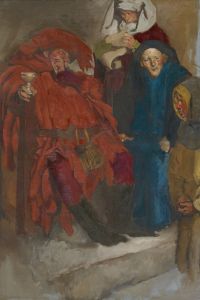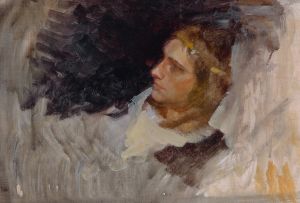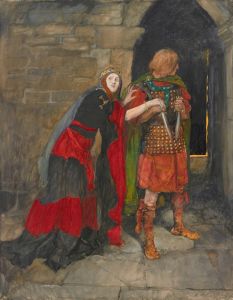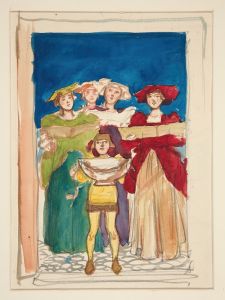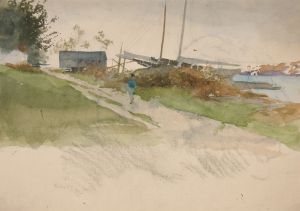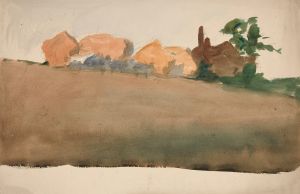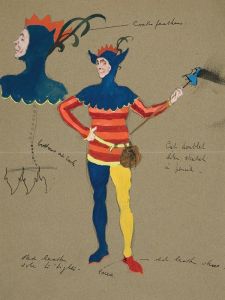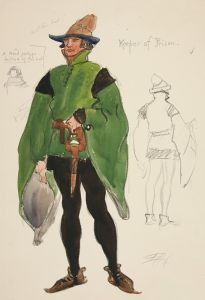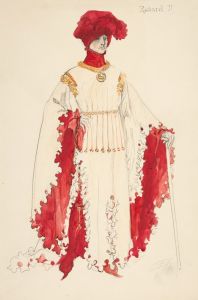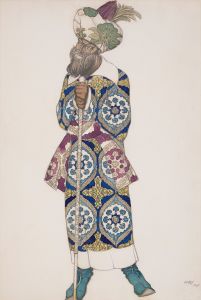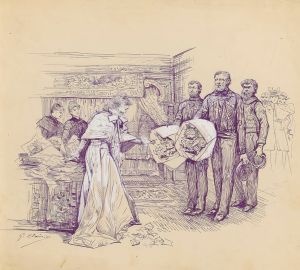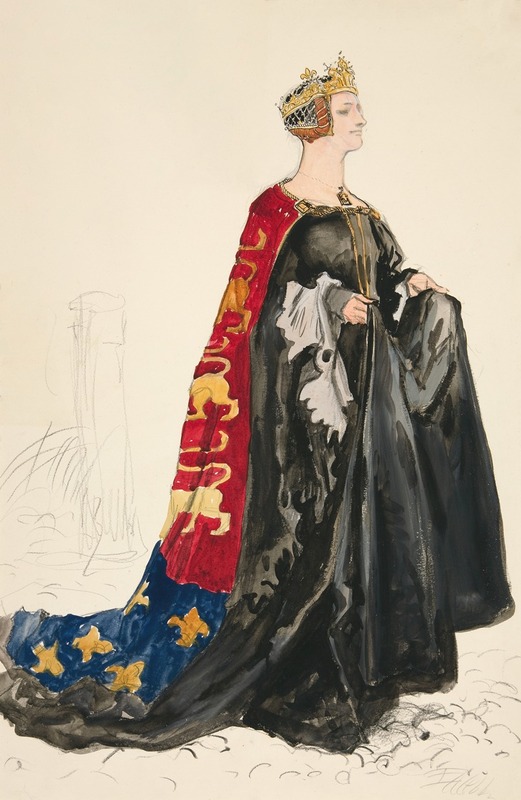
The Queen , costume sketch for Henry Irving’s 1898 Planned Production of Richard II
A hand-painted replica of Edwin Austin Abbey’s masterpiece The Queen , costume sketch for Henry Irving’s 1898 Planned Production of Richard II, meticulously crafted by professional artists to capture the true essence of the original. Each piece is created with museum-quality canvas and rare mineral pigments, carefully painted by experienced artists with delicate brushstrokes and rich, layered colors to perfectly recreate the texture of the original artwork. Unlike machine-printed reproductions, this hand-painted version brings the painting to life, infused with the artist’s emotions and skill in every stroke. Whether for personal collection or home decoration, it instantly elevates the artistic atmosphere of any space.
Edwin Austin Abbey was an American artist known for his work in both illustration and painting. He was particularly recognized for his historical and literary subjects, often drawing inspiration from the works of William Shakespeare. One of Abbey's notable contributions to the world of theater and art was his involvement in the costume design for Sir Henry Irving's planned production of Shakespeare's "Richard II" in 1898.
The costume sketch titled "The Queen" is one of Abbey's works created for this production. It reflects Abbey's meticulous attention to historical detail and his ability to capture the essence of the characters through his designs. Abbey's involvement in the production was part of a broader collaboration with Henry Irving, one of the most famous actors and theater managers of the Victorian era. Irving was known for his ambitious and elaborate productions, often seeking the expertise of artists like Abbey to enhance the visual authenticity and appeal of his plays.
Abbey's sketch for "The Queen" would have been intended for the character of Queen Isabel, the wife of King Richard II. In Shakespeare's play, Queen Isabel is a poignant figure, representing both personal and political dimensions of the story. Abbey's design would have aimed to reflect her status and emotional depth, using elements typical of the late 14th century, the period in which the play is set.
The costume sketches Abbey produced were not merely functional designs but works of art in their own right. They demonstrated his skill in combining historical research with artistic creativity. Abbey's background in illustration, particularly his experience with historical and literary themes, made him well-suited for this task. His work would have contributed significantly to the visual storytelling of the production, helping to transport the audience to the world of Richard II.
Unfortunately, Henry Irving's production of "Richard II" in 1898 never came to fruition. Despite this, Abbey's sketches remain valuable artifacts, offering insight into the theatrical practices of the time and the collaborative efforts between artists and theater practitioners. These sketches are preserved as part of Abbey's legacy, showcasing his contribution to the intersection of visual art and theater.
Abbey's work on the costume designs for "Richard II" is a testament to his versatility as an artist and his ability to engage with complex historical and literary subjects. His collaboration with Irving, although it did not result in a staged production, highlights the importance of visual art in the theatrical experience and the enduring influence of Shakespeare's works on artists across different mediums.





